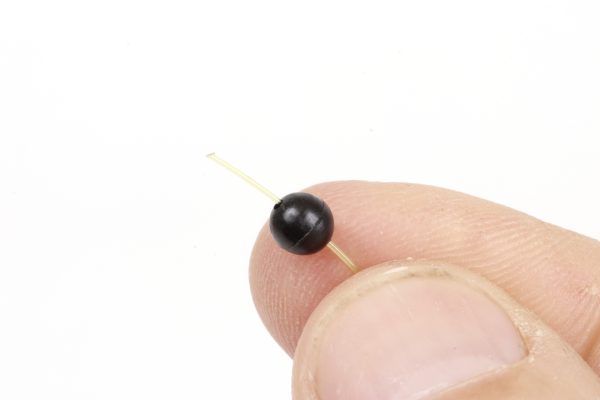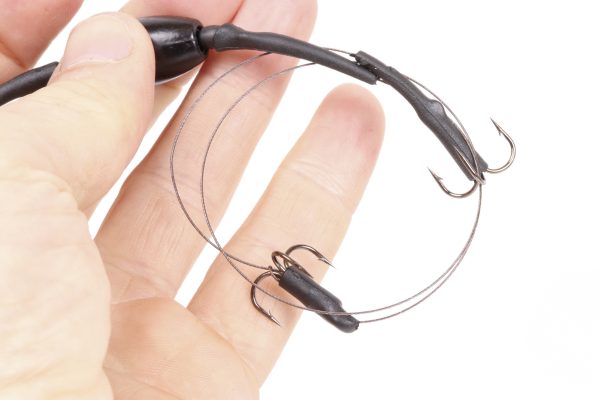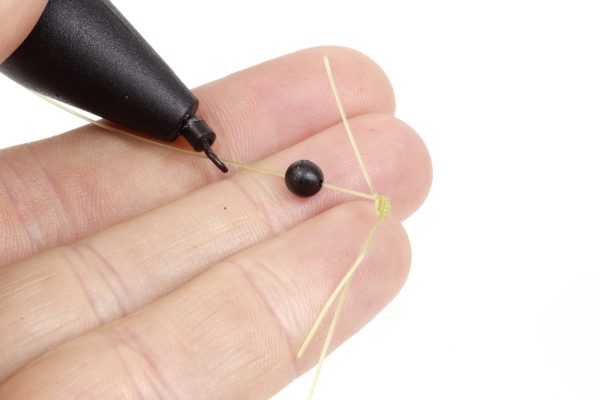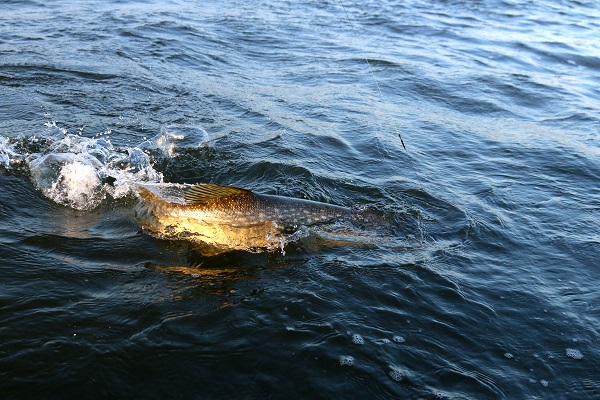This is one of the simplest pike rigs to set up and brilliant for a roving approach when fishing swims of different depths.
There are a number of pike rigs that you can use, but one of the most adaptable and easiest to set up is the float-leger rig. When fitted with a semi-loaded float, the depth only needs to be adjusted using the stop knot above the float and you have a great rig for fishing deadbaits on the lakebed. Because the float is already partially weighted, it is important that it is not fished too far overdepth as this will lead to poor bite indication.

The float is very visual and bites are normally registered by the float sinking from sight or moving off. This is the ideal rig if you are roving between swims and need to have a flexible approach. The float acts as a visual indicator meaning that bite alarms and bobbins are not required. In windy conditions consider increasing the size of the weight and float if the rig is being pulled out of position.
YOU WILL NEED…
1. Thread the hard bead on to your mainline. Ensure that it is a reasonably tight fit to ensure it will not pass over the stop knot that will be tied above it.

2. Thread the loaded pencil float on to the mainline. This float already contains enough weight to partially cock it, producing sensitive bite indication.

3. Thread a swivel cover and a medium float weight on to the mainline or uptrace if used. Slide the swivel cover on to the spigot of the weight to provide a tangle-free finish.

4. Next, tie the wire trace to the end of the mainline using a four-turn grinner knot. This will stop pike biting you off while playing them.

5. Semi-fix the float weight in place by pulling the end over the trace swivel. In the event of a crack-off, the weight is then able to pull free.

6. Use a twin-treble trace fitted with size 6 or 4 semi-barbed hooks. You can tie these yourself or buy them ready-made if you prefer.

7. Tie a stop-knot above the float and bead at roughly the right depth. Adjust the position of the stop knot until it sets the float at dead depth.

8. Once cast out, the float will rise up the mainline until it hits the bead. Make sure you don’t fish too overdepth as this will hamper bite indication.

If you require any more tips or information on pike fishing, please contact the Angling Active team. We are more than happy to help.






